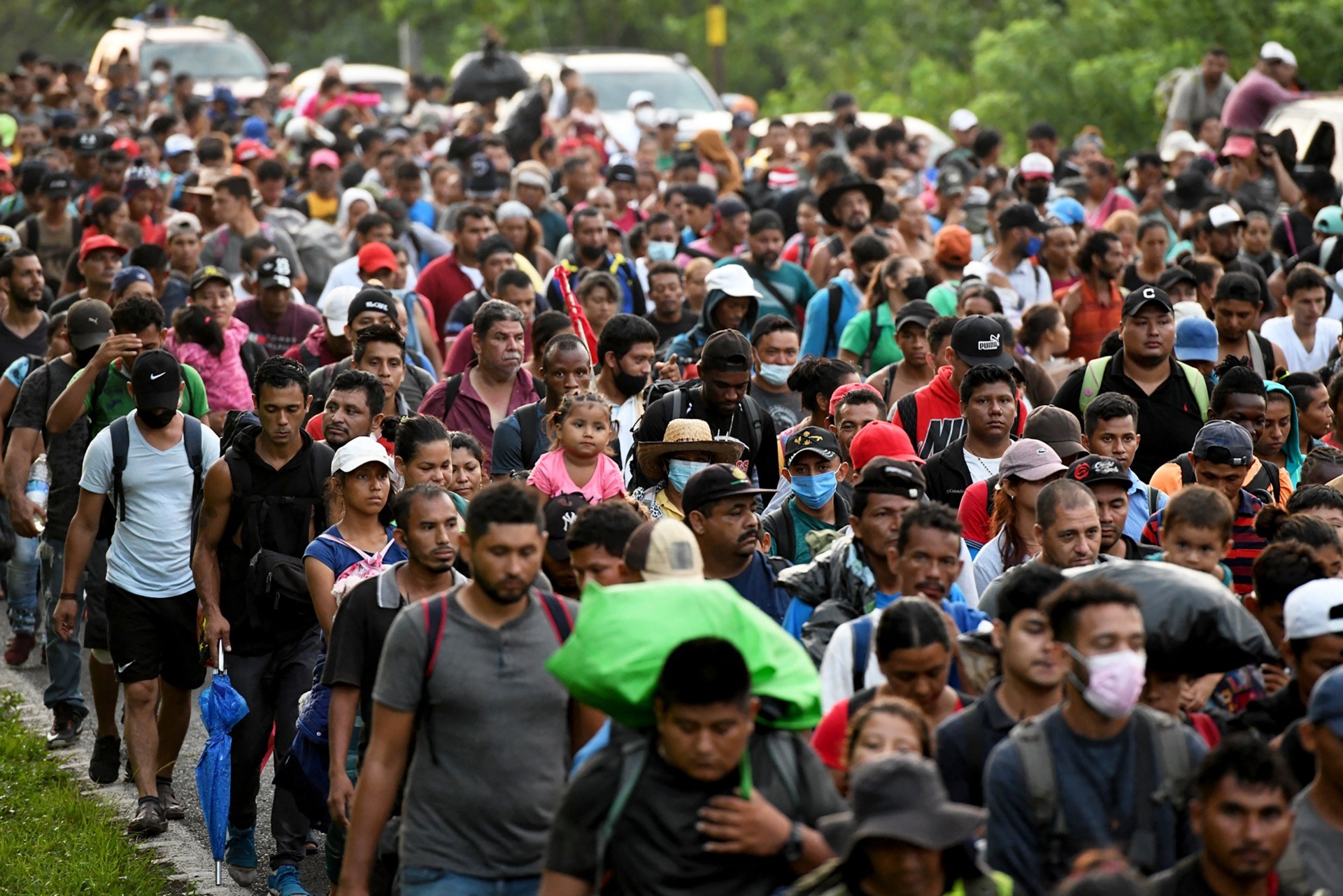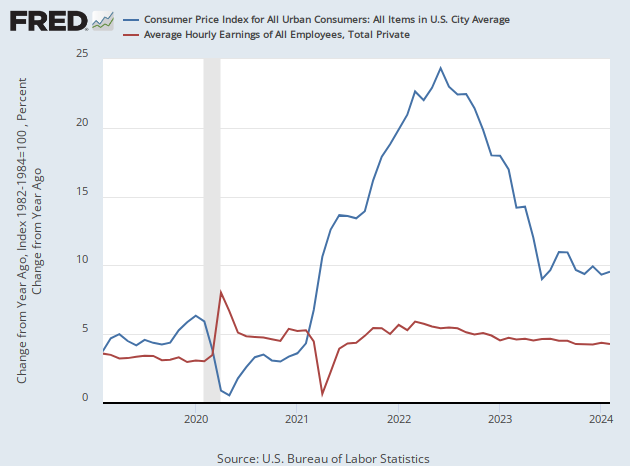
Border Chaos Has Added Millions of Foreigners to Labor Force
Immigration is not going to bail America out of our inflation mess.
The United States is experiencing an enormous surge of migrants. The Department of Labor says that the labor force has increased by 4.6 million foreign born workers during the Biden administration, including an additional 1.3 million so far this year.

That is likely an undercount because it is hard for the Labor Department’s household surveys to count new arrivals, especially when the numbers are rising so quickly.
We know that more than three million migrants who crossed the southern border are still in the U.S. An additional million or so who arrived at ports of entry without visas were allowed to remain in the U.S. because of the Biden administration’s expanded use of parole. Another 3.7 million have arrived with the proper paperwork allowing them to work.
The Democrat Border Crisis
This is a political crisis for President Joe Biden and the Democrats. Most Americans disapprove of the job Biden is doing as president. A quarter of those who disapprove just don’t like the guy, citing personal style or characteristics as the reason for their disapproval, according to Gallup News. Eighteen percent broadly disapprove of his performance.
Around 47 percent of those giving Biden a thumbs down cite his handling of specific issues, according to Gallup. The top three issues will not surprise you. They are immigration (19 percent), the economy (9 percent), and inflation (5 percent).
The Economist/YouGov survey asks registered voters to name the issue they find most important. Twenty-one percent say inflation, making it the top issue for the largest slice of voters. In second place is immigration, with 16 percent.

A group of migrants seeking asylum wear t-shirts reading “Biden, please let us in,” while waiting at the international border crossing in San Ysidro, Mexico, on March 2, 2021. (Stringer/picture alliance via Getty Images)
When the Economist/YouGov poll asks voters to evaluate Biden’s handling of immigration, 61 percent say they disapprove. Included in that figure is 45 percent who say they strongly disapprove of Biden on immigration.
That arguably makes immigration his worst issue, followed by inflation at 59 percent disapproval. But that is only arguably because inflation gets a larger share of voters saying they strongly disapprove, at 47 percent.
The Fantasy of Immigration Lowering Inflation
Faced with the prospect of losing the White House due to unpopular inflation and border policies, Democrats and their allies in the establishment media have recently started proclaiming that everyone has it all backwards. Immigration chaos is not another Biden policy crisis; it’s the solution to the inflation crisis.
They argue that immigration will bring down inflation because it increases the supply of labor. The additional supply of labor supposedly pushes down wages, which supposedly pushes down inflation. Bing, bang, boom.
If you are startled to hear that progressives are claiming that immigration pushes down wages, that’s completely understandable. For as long as anyone can remember, the American left (and a nontrivial portion of the corporate-allied American right) has argued that immigrants do not depress the wages of natives. Now that inflation is a problem for Democratic politicians, however, immigrants have somehow discovered how to drag down wages.
In any case, this argument flunks the most basic economic smell test because it depends on a form of single-entry bookkeeping. Immigrants do increase the supply of labor to domestic employers, but they also increase the demand for goods and services offered in the economy. Immigrants can fill jobs, but they need housing, food, schools for their kids, medical care, and transportation just like everyone else.

Migrants heading in a caravan to the United States walk on their way to Mexico City to request asylum and refugee status on October 29, 2021. (ISAAC GUZMAN/AFP via Getty Images)
Unless we have reason to believe that the immigrants are especially productive at work and ascetic in their spending, they are almost certainly consuming as much as they produce, which would make them a wash in terms of the balance of supply and demand. In the near term, however, they are almost certainly consuming more than they produce because they need to be fed and housed immediately but finding jobs that fit their skills will take time. This is one reason the influx of migrants has been such a drain on local government budgets: the demand of the new workers needs to be subsidized, at least in the short term, because their production is inadequate.
What’s more, the current immigration surge is unlikely to be supplying labor where it is most needed. It would be nothing short of miraculous if the chaotic situation along our border were to result in the admission of workers with the skills needed to fill the jobs U.S. employers have open. Most likely, many of the migrants are actually just displacing existing workers at the lowest rungs of the economy—and therefore suppressing wage growth of already low-income Americans—while leaving a very tight labor market at higher levels.
But inflation is not being particularly driven by increased demand from the poorest Americans. So, weighing down the wages of low-income households will not do much to reduce inflation.
A recent analysis from the Brookings Institution looked at the relationship between immigration and inflation and found that it does not reduce pressure on wages or inflation.
“Because in our assessment the increase in immigration resulted in both greater production and greater consumer demand, it likely produced little additional pressure on aggregate prices or wages,” the Brookings study found.
The Relationship of Wages and Inflation Are Complex
In any case, the precise nature of the relationship between wages and inflation is still hotly debated in economics. It’s far from clear that simply holding down wage growth will hold down inflation. Certainly, the surge in inflation in 2021 and 2022 does not seem to have depended on wage changes—nor has the disinflation that lasted from mid-2022 through the middle of last year.

Even if we grant that wages could drive inflation, the mechanism matters for the purposes of evaluating the impact of immigration. While some economists think of wages as a cost of business that can get passed on to consumers in the form of higher prices, the more credible model says that rising wages do not push up inflation but may pull it higher by giving workers more buying power. But in that case, immigration will not reduce inflation because it does not take away from worker income in the aggregate; it just spreads it around.
It’s hard to blame the Democrats for trying. It would be very convenient if they could solve the inflation problem by allowing the immigration crisis to continue. And if they could convince Americans that immigration lowered inflation, maybe they could make some progress in flipping those disapproval ratings. If the Fed would agree with them, maybe interest rates could come down as immigration rates go up.
That’s not going to happen. Migration chaos is a problem. It doesn’t lower inflation, and it certainly will not convince the Fed to lower rates.






